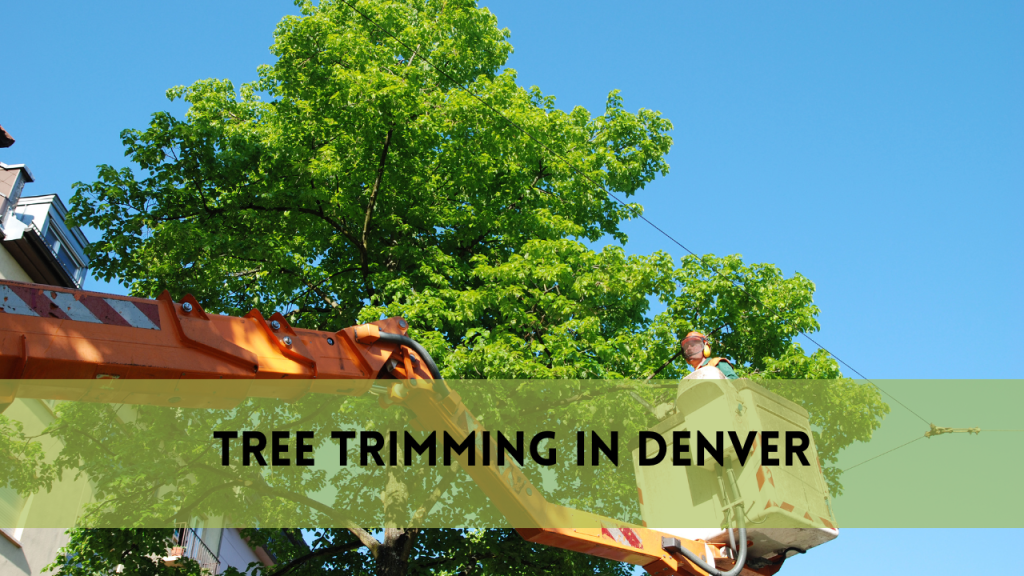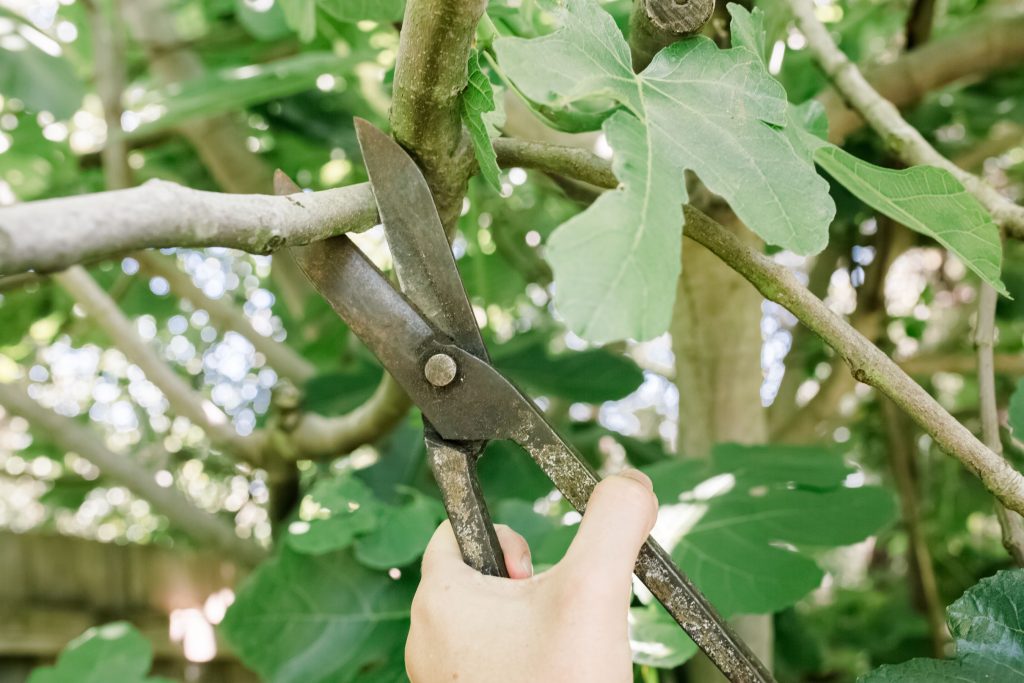Trim a Crabapple Tree
Crabapple trees are a great extension to any garden or scene, offering lively sprouts in the spring and brilliant natural products in the fall. Nonetheless, similar to some other tree, they require standard support to flourish and keep on upgrading the magnificence of your open air space. One vital part of really focusing on crabapple trees is knowing how to appropriately manage them. Standard trimming advances the general soundness of the tree by eliminating dead or unhealthy branches. This forestalls the spread of illnesses and permits the tree to productively designate its assets more. Pruning can improve the tree’s appearance by molding it, keeping a fair covering, and empowering an engaging development design. Trimming wipes out powerless or perilous branches that could represent a danger to individuals, property, or different plants in your nursery. Legitimate pruning can further develop organic product creation by permitting daylight and air course into the shade, which is fundamental for blossom fertilization and organic product advancement. A very much kept up crabapple tree can live for a long time, giving magnificence and satisfaction to ages to come.
Understanding trim a crabapple tree
- Species and Assortments: Crabapple trees come in different species and cultivars, each with its own development propensities, size, and blooming attributes. Some famous crabapple species incorporate Malus sylvestris, Malus floribunda, and Malus ioensis. It’s fundamental to distinguish the particular kind of crabapple tree you have, as this can impact how you prune it.
- Size and Development Propensity: Crabapple trees normally range in size from 6 to 30 feet in level, contingent upon the assortment. Understanding the experienced size of your tree is pivotal while arranging your pruning system. More modest assortments might require less forceful pruning, while bigger ones could require more consideration.
- Blossoming Time and Organic product: Crabapple trees are treasured for their lavish and vivid spring blossoms. A few assortments produce single or twofold blossoms, while others have changing varieties and sizes of natural products, which can enhance your scene. Observe when your tree ordinarily blossoms and delivers organic product, as this can affect the planning of your pruning.
- Foliage: Crabapple trees have particular foliage, with leaves that can fluctuate in size, shape, and variety. A few cultivars have alluring red or purple foliage, which can add to their allure. Understanding the foliage attributes of your tree can assist you with settling on informed choices while molding it.
- Infection Opposition: Crabapple trees can be powerless to specific infections, for example, apple scab and fire curse. Various cultivars might have shifting degrees of protection from these infections. Knowing your tree’s infection opposition can illuminate your pruning rehearses, as eliminating sick branches is fundamental for its wellbeing.
- Decorative Use: Numerous mortgage holders plant crabapple trees for their tasteful worth. These trees can act as central focuses in gardens, conceal, and draw in pollinators. Understanding how you need your crabapple tree to squeeze into your scene configuration can assist with directing your pruning objectives.
When to Manage Crabapple Trees
- Pre-spring to Late-winter (Lethargic Season):
- Summer Pruning (In the wake of Blooming):
- Fall Pruning (Watchfulness Required):
- Try not to Prune During Outrageous Climate:
- Routine Support Pruning:
Important Tools Pruning Shears (Hand Pruners)
- Sidestep Pruners
- Iron block Pruners
- Loppers
- Pruning Saw
- Shaft Pruner
- Security Stuff
- Gloves
- Wellbeing Glasses
- Helmet
- Ear Security
How to trim a crabapple tree
Survey the Tree
Distinguish Dead and Ailing Branches: Start by examining the whole tree for dead or unhealthy branches. Search for branches without any leaves, yellowed or stained foliage, or perceptible sores. Mark these branches for expulsion.
Inspect the Shade: Survey the general design of the tree. Search for branches that cross or rub against one another, as these can cause harm and ought to be pruned. Hold back nothing, very much ventilated covering.
Think about the Tree’s Shape: Settle on the ideal shape or structure for your crabapple tree. Normal shapes incorporate oval, round, or jar molded. Remember this vision as you continue with pruning.
Pruning Procedures:
Deadwood Evacuation: Utilizing hand pruners or loppers, cautiously eliminate dead branches by making clean cuts flush with the primary stem or branch collar (the enlarged region where the branch interfaces with the tree). Be mindful not to eliminate live branches nearby the deadwood.
Thinning: Meager the shade by specifically eliminating branches to further develop air dissemination and light infiltration.
Begin by eliminating water sprouts (incredible, vertical shoots) and branches that become internal or cross one another. Make cuts simply over a bud or sidelong branch to energize new development in the ideal bearing.
Forming and Size Control: To keep up with or make a particular shape, specifically prune branches to accomplish the ideal structure. Eliminate any branches that stray from the planned shape. Remember that crabapple trees normally have a smooth, spreading structure.
Pruning Cuts:
Heading Cuts: Utilized for diminishing the length of a branch or empowering fanning at one point. Make these cuts simply over a solid bud or sidelong branch, calculating the cut at a 45-degree point away from the bud.
Diminishing Cuts: Made to eliminate whole branches or stems. These cuts ought to be made flush with the parent branch or trunk. Try not to leave hits, as they can welcome illness and irritations.
Decrease Cuts: At the point when you really want to diminish the size of a branch fundamentally, make decrease cuts. These include scaling back to a parallel branch that is something like 33% the size of the branch being taken out.
Pruning Youthful Crabapple Trees
Lay out a Focal Pioneer: For youthful trees, empower a focal pioneer (the vitally upward trunk) by pruning contending pioneers or branches that could become predominant.
Eliminate Low Branches: Prune away lower branches to make freedom for people on foot or yard gear.
Shape Early: Start molding the tree when fostering areas of strength for an adjusted structure is youthful. Try not to weighty prune in the initial not many years to permit the tree to set up a good foundation for itself.
Related Posts:
Aftercare and Support
- Watering:
- Fertilization:
- Mulching:
- Irritation and Illness The board:
- Pruning Support:
- Organic product Diminishing:
- Backing and Insurance:
- Record Keeping:
- Ordinary Reviews:
FAQs
- When is the best chance to prune my crabapple tree?
The ideal time for pruning crabapple trees is during the lethargic season, regularly in pre-spring to spring early. In any case, minor pruning should likewise be possible subsequent to blooming in pre-summer or late-spring.
- Could I at any point prune my crabapple tree in the fall?
Fall pruning is for the most part deterred, as it might animate new development that will have opportunity and energy to solidify off before winter. On the off chance that you should prune in the fall, do so from the get-go in the season and abstain from weighty pruning.
- What amount of the tree could I at any point prune in one meeting?
Eliminating more than 33% of the tree’s covering in a solitary year is suggested not. Over-pruning can pressure the tree and influence its wellbeing.
- What devices do I want for pruning my crabapple tree?
Fundamental instruments incorporate hand pruners, loppers, pruning saws, and wellbeing stuff, for example, gloves, security glasses, and ear insurance. The decision of hardware relies upon the size and kind of branches you’re cutting.
- Might I at any point prune a youthful crabapple tree, and how could I shape it?
Indeed, you can prune youthful crabapple trees to lay out a focal pioneer and eliminate low branches. Molding ought to go for the gold, open shelter while keeping up with the tree’s normal elegance.
Conclusion
In this far reaching guide, we’ve investigated the craftsmanship and study of managing a crabapple tree. Legitimate pruning is fundamental for keeping up with the wellbeing, appearance, and life span of your tree. Start by distinguishing the particular species and qualities of your crabapple tree. Perceive the significance of knowing its size, blooming propensities, infection opposition, and decorative worth. Pruning during the lethargic season (pre-spring to late-winter) is by and large best for major primary changes. Pre-summer or late-spring is appropriate for minor molding and size control. Furnish yourself with the right instruments, including hand pruners, loppers, pruning saws, and security gear. Focus on security by investigating the tree, remaining hydrated, working with a pal whenever the situation allows, and utilizing stepping stools accurately.



